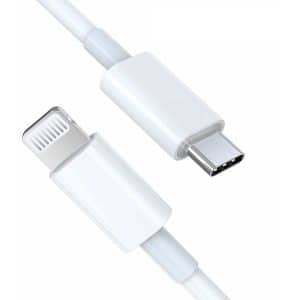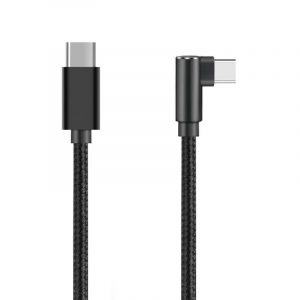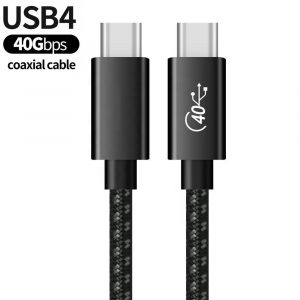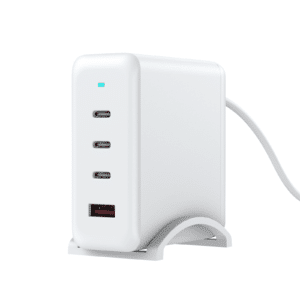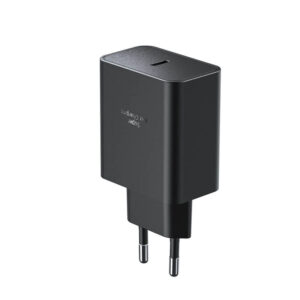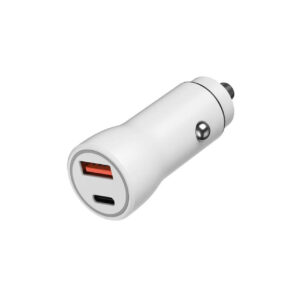I was tired of broken cables and messy desks, so I tried magnetic wireless chargers. They completely changed how I charge my devices.
A magnetic wireless charger is a charging device that uses built-in magnets and Qi coils to align your phone and deliver power wirelessly. It aligns with your phone automatically and delivers power wirelessly, making charging faster, easier, and more reliable.
If you want to know how they work, their safety, supported devices, and benefits, keep reading.

What is a magnetic wireless charger?
I used to think a charger was just a cable and plug, but magnetic chargers are different.
A magnetic wireless charger is a charging pad or stand with magnets that snap onto your phone. It uses electromagnetic induction to transfer energy wirelessly while keeping your phone aligned.
Key features of magnetic chargers
| Feature | Description |
| Built-in magnets | Hold phone in place |
| Qi wireless coils | Transfer energy |
| Easy setup | No cables needed |
Magnetic wireless chargers combine two technologies: magnets and wireless energy transfer. The magnets solve the alignment issue of traditional wireless pads. Even if your phone moves, the magnetic charger keeps it properly aligned for stable charging. This makes them more stable and effective than standard chargers.
Many people use them at nightstands, work desks, and in cars. They make charging smooth and stress-free. This small detail can improve your daily routine more than you might expect.
How does a magnetic wireless charger work?
When I first used one, I was surprised by how simple it felt.
A magnetic wireless charger works with electromagnetic induction. The charger coil creates a magnetic field. The phone coil receives it and turns it into power. Magnets keep both coils perfectly aligned.
Process of charging
| Step | What happens |
| 1 | Charger coil generates a magnetic field |
| 2 | Phone coil receives the field |
| 3 | Energy is converted into current |
| 4 | Battery charges safely |
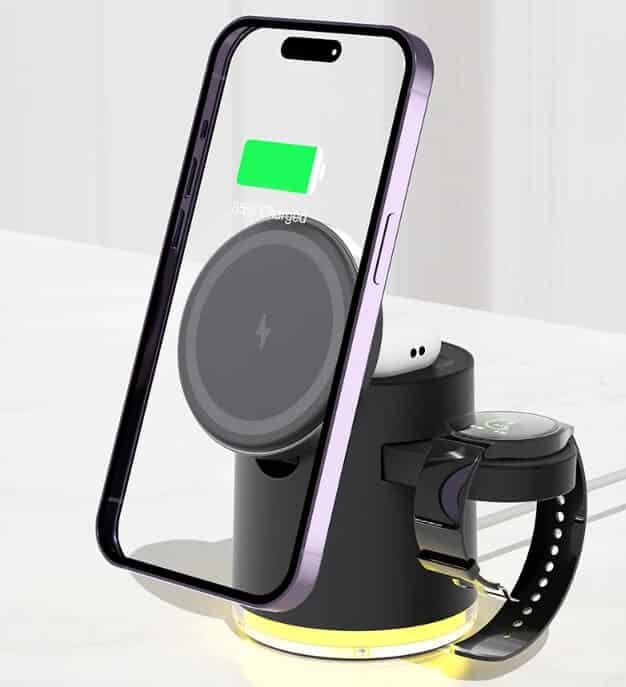
Why alignment matters
Wireless charging needs precise coil alignment. Without magnets, your phone may shift, causing slow or unstable charging. With magnets, the phone locks into the correct position. This ensures stable and fast power transfer.
Everyday impact
You can pick up your phone to check messages and place it back without thinking. The magnets guide it into position. This saves time and avoids frustration. It also extends battery life by avoiding unstable power flow.
Is a magnetic wireless charger safe for phones?
At first, I was afraid magnets could harm my phone or battery.
Magnetic wireless chargers are safe for phones. The magnets are not strong enough to damage memory or sensors, and Qi-certified chargers have protections like temperature and overcharge control.
Built-in protections
| Safety system | Purpose |
|---|---|
| Temperature control | Prevent overheating |
| Overcharge protection | Stop charging when full |
| Power regulation | Deliver correct power |
Why they are safe
Magnets in chargers are designed for alignment only. They do not interfere with phone signals or storage. Qi-certified devices must pass safety tests before being sold.
Some cheaper, uncertified chargers may not include these protections. That is why choosing certified products is the safest and most reliable option. With the right charger, you can use it daily without risk.
Real-world usage
Millions of iPhone and Android users charge wirelessly every day. Reports of damage are rare when proper chargers are used. This shows that the system is safe and reliable.
Which devices support magnetic wireless charging?
I thought only the newest phones worked, but I found that many devices support it.
Most iPhones from the 12 series and newer support magnetic charging with MagSafe. Some Android phones and accessories also support it if they have Qi charging and magnetic rings.
Supported devices
| Brand | Models |
| Apple | iPhone 12, 13, 14, 15,16 with MagSafe |
| Samsung | Galaxy S21 and newer with magnetic case |
| Pixel 7, Pixel 8 with adapters | |
| Accessories | AirPods Pro case, smartwatches |

How to enable it
If your phone does not have built-in magnets, you can add a magnetic adapter ring or buy a case that supports it. This small addition makes older devices compatible with magnetic chargers.
Future outlook
More brands are moving toward magnetic charging as a standard. Users prefer simple and secure ways to charge. Soon, most phones and accessories will support it out of the box.
What are the benefits of magnetic wireless chargers?
I switched because I was tired of broken ports, but the benefits went beyond that.
Magnetic wireless chargers give easy alignment, protect charging ports, and reduce desk clutter. They also work in cars, offices, and bedrooms, making charging faster and more flexible.
Benefits at a glance
| Benefit | Why it matters |
| Easy alignment | No guesswork, fast charging |
| Port protection | Fewer cable insertions |
| Clean setup | No tangled wires |
| Secure hold | Phone stays fixed |
| Wide use | Home, work, car |
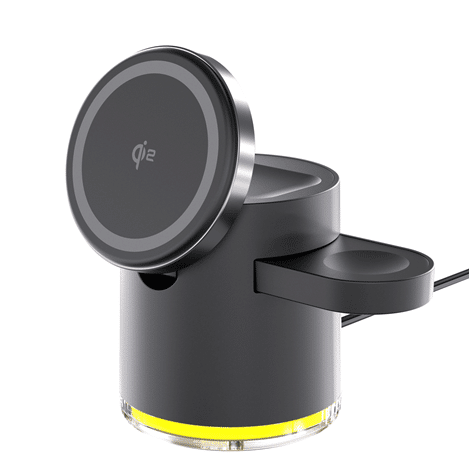
Why users love them
They solve small problems that add up. No more broken cables or loose ports. No more messy desks full of cords. You only need to place your phone on the pad and wireless charging begins instantly.
In cars, they add safety. You do not need to look for cables while driving. The phone locks in place and charges at the same time. At home, they keep your space neat.
They also have a modern look. Most chargers are slim and stylish, fitting into any room design. They turn charging into a natural part of your daily flow.
Conclusion
Magnetic wireless chargers are simple, safe, and practical tools that make charging easier every day.
FAQ
Q1: Do magnetic chargers charge slower than cables?
A1: Yes, most are slower than wired fast chargers, but they are stable and convenient.
Q2: Can magnets erase phone data?
A2: No, the magnets are too weak to affect phone storage.
Q3: Do I need a special case?
A3: Some phones need magnetic cases or rings. iPhones 12 and newer have them built in.
Q4: Can I use them with AirPods?
A4: Yes, many AirPods cases support magnetic wireless charging.
Q5: Are they worth the switch?
A5: If you value ease, safety, and design, then yes, they are worth it.
Related Products
Wandkey Electronic Co., Ltd – Your Trusted Partner for Premium Phone Accessories
Wandkey Electronic Co., Ltd is a leading manufacturer specializing in high-quality phone accessories, offering a full range of USB-C Cables (2.0/3.0/3.1/3.2 Gen 2/USB4), Lightning Cable, iPhone Charger cable, PD Fast Charer, GaN Wall Chargers, Car Chargers, and more. With UL, CE, RoHS, Reach, PSE, KC, FCC, UKCA certificate, ensuring top-tier quality and safety.
What We Offer
We provide OEM & ODM services to help brands and businesses customize their products, including:
✅ Custom Branding & Logo Printing – Enhance your brand presence with personalized designs.
✅ Tailored Product Specifications – Customize cable lengths, charging power, materials, and more to fit your needs.
✅ Certified and High-Quality Manufacturing – Strict quality control and compliance with international safety standards.
✅ Packaging Customization – We offer bulk packaging, retail packaging, and eco-friendly solutions.
✅ Technical Support & After-Sales Service – Professional guidance from product development to after-sales assistance.
Who We Serve
Our business model is B2B wholesale, catering to brands and manufacturers who require premium charging accessories. Our main customers include:
✔ Phone accessory brands looking for high-end charging solutions.
✔ Electronics and smart device manufacturers needing reliable charging components.
✔ Medical equipment companies, monitoring system providers, and other industries requiring certified power solutions.
Looking for a reliable supplier for premium USB cables and chargers? Contact us today to discuss your project needs and get a customized solution tailored to your brand.
Top Topics
2025 Latest MFi Authorized Manufacturers list
Differences of Lightning Connector
How to check MFI Certification
How to get MFI Certification for Your Brand?
USB C Pinout Guide and Features
Understanding USB PD 3.1 vs PD 3.0 vs PD 2.0
USB 2.0 vs 3.0 Cables: Speed, Compatibility & Buying Guide
Why does the MFI Certified Lightning Cable so expensive?
MFI Product Packaging Requirement?
Disassemble MFI Lightning Cable
How do we guarantee the quality?
How to identify counterfeit or uncertified Lightning connector accessories
How to Choose Fast Charging Cable for Your Phone
How do I choose a USB-C cable?
Differences between USB 3.0 3.1 and 3.2
Test on USB C to USB C 3.1 Cable
Test on Right Angle USB C to USB C Cable


